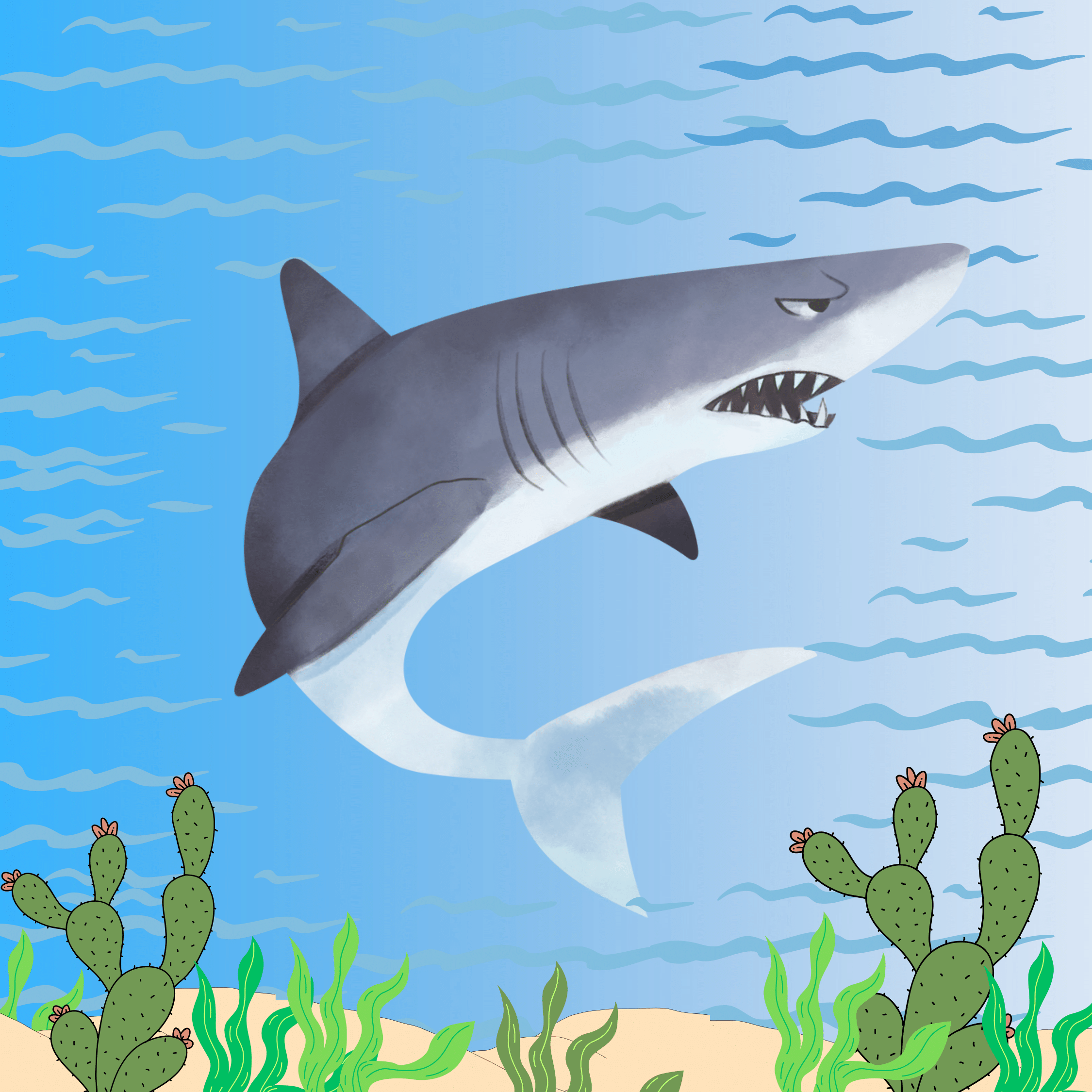GRAPHIC | Tara Espinoza
What does the briny sea and the dusty western badlands have in common? No, this is not the beginning of a bad joke. Rather, it is the beginning of a hot take. Jaws can be categorized as a western.
Now, you’re probably thinking, no way. It is missing all of the important western aspects. After all, Jaws features no cowboy hats, no boots, no high noon showdown, no frontier town under duress and no nameless racist caricatures for the hero and his posse to slay.
Well, if one reframes their mind, we see that Jaws does indeed feature all of these things, minus the cowboy hats sadly, especially if there are small spins on the classic frontier western myth.
Barring switching the American desert to the ocean, we see a posse of heroes entering their “covered wagon (ship named the Orca)” to combat the heathen (shark) who is threatening the settler’s ways (not allowing the beach to be opened up in their town, ironically named Amity).
This idea is integral for the movie to function. The western myth is alive and well, with an out-of-town hero coming in to save the day for the townsfolk. This idea is synonymous with classic western heroes, showing up to a town in need on a white horse.
While the New York native Chief Brody is not as mysterious and well respected as the western hero, the myth still applies, with the man still having pull within the town. In fact, the only man who seems to undermine his authority is the Mayor of the town, which could be seen as an antagonist anyway.
There is another important western theme at play too, with the idea of the frontier boundary being broken by the antagonist. This trope is made manifest by the shark invading the inland pond.
This is a place that the townspeople assumed to be safe, but was not, resulting in the death of an innocent settler. The situation also galvanized Chief Brody, who made it his mission to take down this shark, no matter the cost.
It is also important to note that Chief Brody is a resident of the town, although he still applies as an outsider. In typical western mythos, the hero does not live in the town they are out to serve. This will come into play later.
The Chief is also rife with flaws. For instance, Brody is scared of the water. He is seen as generally timid and soft-spoken as well. While he may have these issues, something not typically reserved from heroes of this genre, he still fits the archetype very blatantly, wearing his khaki uniform and brimmed hat proudly and inspiring reverence within the town, despite his fears. The Police chief protagonist can very much be seen as the noble protector of his township.
The showdown at the end between the Chief and the antagonist is reminiscent of the classic “high-noon showdown” as well, with the battle ending with a well placed round, ending the antagonist’s life in a dramatic display of victory for the hero. The movie closes with the Chief and his crony, a scientist who aids him, “riding” into the horizon on the floating shipwreck that once was the protective “Covered wagon” that served them for a time upon the frontier.
Despite the crashing waves and salty fishermen, “Jaws” could certainly be defined as a western, thanks to the motifs presented throughout the entire movie.







